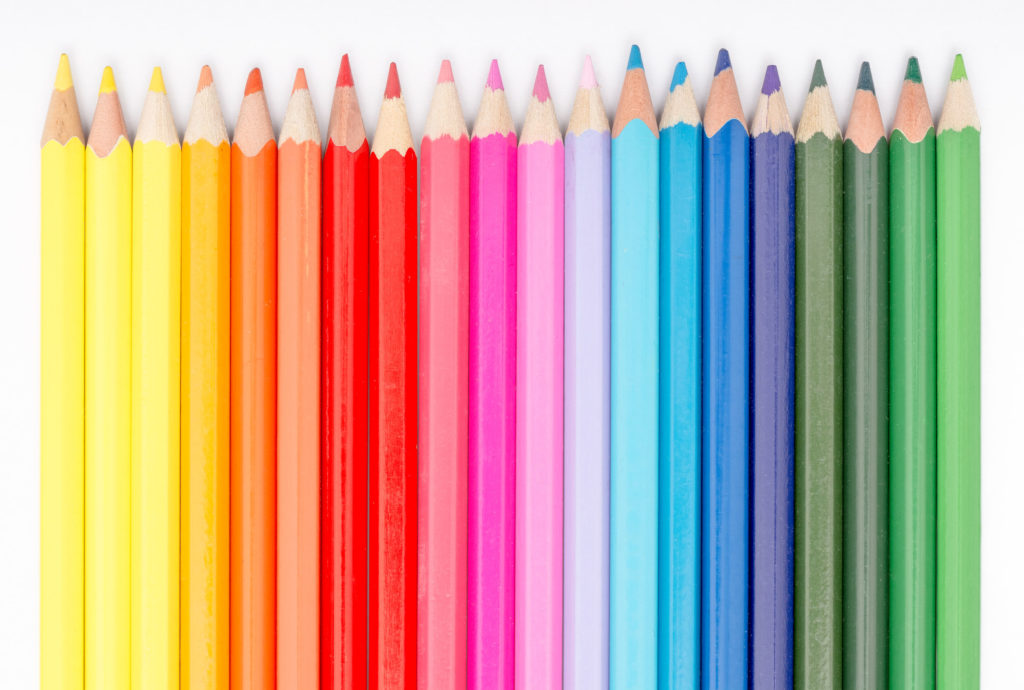Colouring may sound like a simple activity, but it can actually improve health.
A research study found that adults aged 65 or older who engaged in creative activities had better overall health, made fewer visits to the doctor, used less medication and had fewer health problems. Read on to find out how colouring helps your mind!

Helps with dementia and Alzheimer’s Disease
Everything from colour and brush choices to subject matter can reveal how someone is feeling at that moment—which is invaluable if the person you are caring for finds it difficult to talk much. Colouring sessions are especially suited for people living with dementia or Alzheimer’s Disease as it helps them to express themselves and better communicate their thoughts. For people with Alzheimer’s Disease, it is best to avoid surrealistic and bizarre dream-like templates, as they may only confuse and irritate them. It is best to choose pictures that they can recognise from daily life or from their past, such as those with flora and fauna themes. You may also use memories from their past – for instance, trips abroad, sports played or landscapes in which they grew up in.
Improves your concentration
The brain loves rhythm, and there is a rhythmic motion with your hand when you colour. Active meditation focuses attention on simple tasks that require repetitive motion. The process of choosing the colours and the repetitive action of colouring focuses the brain on the present, blocking out any intrusive thoughts and helps you to concentrate. Concentrating this way replaces negative thoughts and creates a peaceful state of mind.
Feelings of accomplishment and self-esteem
Whether a person has been creating art for many years or is just starting to unleash their artistic abilities, being able to look at the pictures they completed will give them a sense of pride and accomplishment, as well as boost self-esteem. Creativity is a skill that helps many in their daily lives and especially when looking for solutions to solve a problem.
Better coordination
As adults age, it takes even more of an effort to control the muscles in their arms and hands, as well as maintain coordination in all of their activities. Doing a simple activity, such as colouring in a colouring book, can strengthen and delay the loss of these skills, and also help to prevent the loss of cognitive skills.
Colouring utilises both right and left hemispheres of the brain. When we are thinking about balance, colour choices, applying coloured pencil to paper, we are working on problem solving and motor skills. The action of colouring involves both logic and creativity. When we use logic to choose a colour for a particular shape or pattern, we activate the analytical part of the brain. When we choose to mix and match colours, we activate the creative side of the brain. This helps incorporate both areas of the cerebral cortex which control vision and help with coordination and motor skills.
Relieves stress
Colouring is a tremendous help to those who have PTSD, anxiety and stress issues as the activity helps to calm down the amygdala: the part of the brain that controls our ght or ight response, and keeps individuals in a heightened state of worry, panic, and hypervigilance when it is active. Colouring allows one to focus and this helps to calm down the amygdala and its response. This lets your brain have some much needed rest and relaxation, which can be a welcome outlet for these individuals. It also helps to slow down heart rate and respiration, and loosens muscles as well.
The Colour Guide
- Cool colours like blue, green and purple have a calming effect.
- Warm colours like red, orange and yellow are pepper-uppers. Try them when you want to brighten a negative mood.
- Bright colours are energising, so turn to them when you want a little inner lift.
- Dark colours carry a relaxing energy and can be used to calm down an overactive mind.
- Pastels and light tints communicate softness and help soothe the soul.
- Bright colours promote physical activity but appear to slow time down.
- Cooler and softer colours are beneficial for mental activity and appear to speed time up.










